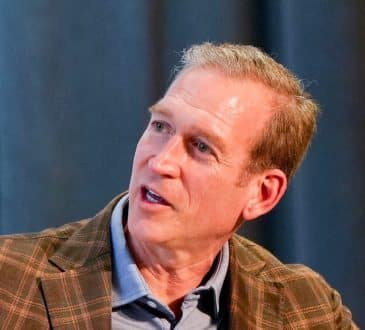Does your CEO need a brand shrink?

Branding, once misperceived as the sole domain of Chief Marketing Officers (CMOs), is now a key concern in the corner office, too. CEOs are looking to leverage the positive impact of brand on consumer preference, and the boost to customer loyalty and premium pricing which that preference brings. Chief executives even have a range of sophisticated brand valuation models available to explain the bottom line impact to board members and shareholders alike (the ISO 10668 Brand Valuation Standard and the Marketing Accountability Brand Investment Valuation project are just two examples).
What CEOs, and their teams, don’t often have is clarity and alignment on dealing with the complexity of brand as a unique business asset, and how to employ it across an organization and product line. Brand consulting firms typically address large projects and operate organization-to-organization. So, how does a CEO, or other leader, get individual counsel when difficult brand issues arise? A new breed of brand experts is emerging to fill the void: talk therapists for brand leaders.
We recently sat down with one such pioneering practitioner, Nancy Lerner, who recently put out a shingle as The Brand Shrink (this in addition to her decades-long work as the Founder and Chief Strategist of the brand consultancy Otherwise, Inc.). Here’s what she had to tell us during our time on the couch.
Q: You describe your service as Talk therapy for marketers. What are some of the issues that you couldn’t serve just as well in a standard brand consulting engagement?
Nancy Lerner: The best way to describe it, at least as it relates to the branding work that we do at Otherwise, Inc., is that those engagements are very project-based. We might be developing a full strategy. Or naming a new entity. We might be developing a new visual identity, a website, advertising, social media, or content creation on a larger scale. That kind of work involves a lot of people from a creative team, and a number from the client side.
With Brand Shrink, I’m serving individuals, one-on-one. That could be a CEO, a CMO, a COO. It could be somebody who is in a marketing group The commonality is that it’s a leader who needs to speak and think freely — and not be in a situation where they’re constrained by the politics of their organization or the dynamics of the project group. They want to share problems honestly with someone experienced who can help them work through issues in real time.
Q: Do you see particular junctures in the life of a brand where this type of talk therapy would be good for a CEO, or where they might seek you out?
Nancy Lerner: Rather than focusing on specific junctures, as you refer to them, I think the litmus test is a person in a senior role, responsible for branding and marketing, who somehow feels stuck. It could be about budget. It could be about marketplace; it could be about technology. It could be about the difficulty of creating a culture of innovation in an organization. The topics are endless — it’s really whatever’s keeping somebody up at night as it relates to marketing and branding.
Q: Talk therapy is often about relationships, and the CEO / CMO relationship can certainly be fraught. Could you envision a sort of “couples therapy” to help CEOs and CMOs improve how they work together?
Nancy Lerner: Absolutely. And it could be useful for other types of corporate couples. A CMO and a chief technology officer. A chief financial officer and a CEO. There’s definitely a power to the work as it relates to helping dyads, that is, relationships and interactions with two people.
And then, of course, there’s group therapy for larger numbers of people, and the opportunity to help facilitate dialogue, discourse, and neutral conversation. I now have client clients who are coming back so that they can invite others into the discussion.
Q: Is there a particular type of leader in the C-Suite that you find benefits most from your brand of talk therapy?
Nancy Lerner: Well, this is a new arena, and every client is opening the aperture wider, starting to bring to the conversation new threads, new concerns, new ideas, new themes. But the common ground across all of them has been the same thing: they’re curious. And they’re forward-facing.
Basically, they see brand and branding as a joyful, optimistic practice. But something’s getting in the way of that joy, that optimism, and the success that comes with it. Whatever else people are doing to address the situation isn’t working, so talk therapy with the Brand Shrink is piquing people’s interest. It’s turning into another avenue for executives to imagine how they might take more control and feel better about what the future holds.
Written by Chuck Kent.
Have you read?
Report: Countries with the highest rates of Dementia, 2024.
Report: Countries with the Highest Rates of Lung Cancer, 2024.
Report: These Are The Countries with Universal Health Coverage Programs, 2024.
Revealed: These Are The Countries with the Highest Death Rates, 2024.
Revealed: The Healthiest (and Unhealthiest) Countries in the World, 2024.
Bring the best of the CEOWORLD magazine's global journalism to audiences in the United States and around the world. - Add CEOWORLD magazine to your Google News feed.
Follow CEOWORLD magazine headlines on: Google News, LinkedIn, Twitter, and Facebook.
Copyright 2025 The CEOWORLD magazine. All rights reserved. This material (and any extract from it) must not be copied, redistributed or placed on any website, without CEOWORLD magazine' prior written consent. For media queries, please contact: info@ceoworld.biz








